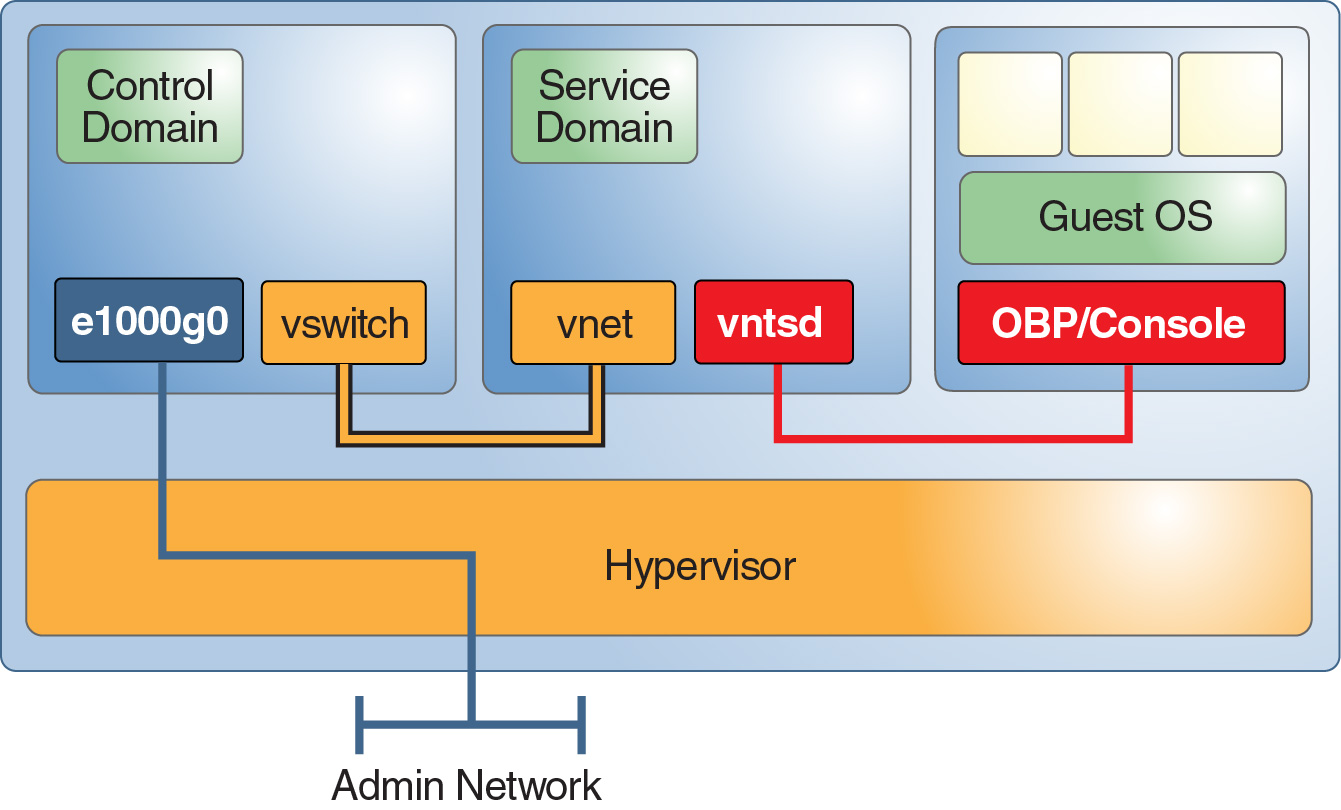Service Domain
A service domain provides some virtual services to guest domains on the system. Services might include a virtual switch, virtual disk, or virtual console service.
Figure 1–6 shows an example service domain that offers console services. Often the control domain hosts the console services, and thus is also a service domain. The execution environment domains often combine the functions of a control domain, I/O domain, and service domain in one or two domains.
Threat: Manipulation of a Service Domain
An attacker who gains control of a service domain can manipulate data or listen to any communication that occurs through the offered services. This control might include console access to guest domains, access to network services, or access to disk services.
Evaluation: Manipulation of a Service Domain
While the attack strategies are the same as for an attack on the control domain, the possible damage is less because the attacker cannot modify the system configuration. The resulting damage might include the theft or manipulation of data that is being offered by the service domain but not manipulation of any data sources. Depending on the service, an attacker might be required to exchange kernel modules.
Figure 1-6 Service Domain Example

Countermeasure: Granularly Segregating Service Domains
If possible, have each service domain offer only one service to its clients. This configuration guarantees that only one service can be compromised if a service domain is breached. However, be sure to weigh the importance of this type of configuration against the additional complexity. Note that having redundant I/O domains is highly recommended.
Countermeasure: Isolating Service Domains and Guest Domains
Ensure that the service domain and the guest domain do not share the same network port. Also, do not plumb any virtual switch interface on the service domain. For Oracle Solaris 11 service domains, do not plumb any VNICs on the physical ports that are used for virtual switches.
If you must use the same network port for both the Oracle Solaris 10 OS and Oracle Solaris 11 OS, place the I/O domain traffic in a VLAN that is not used by guest domains.
If you cannot implement either of the previous solutions, do not plumb the virtual switch in the Oracle Solaris 10 OS and apply IP filters in the Oracle Solaris 11 OS.
You can isolate both Oracle Solaris 10 and Oracle Solaris 11 service domains from guest domains. The following solutions are shown in the preferred order of implementation:
Countermeasure: Restricting Access to Virtual Consoles
Ensure that access to individual virtual consoles is limited to only those users that must access them. This configuration ensures that no single administrator has access to all consoles, which prevents access to consoles other than those assigned to a compromised account. See How to Create Default Services in Oracle VM Server for SPARC 3.2 Administration Guide .